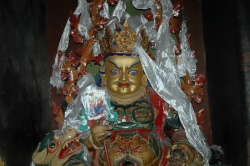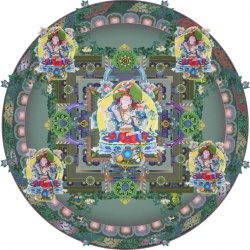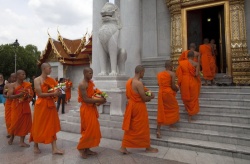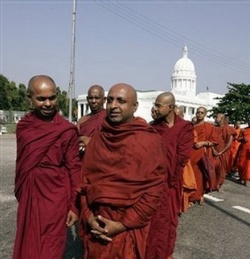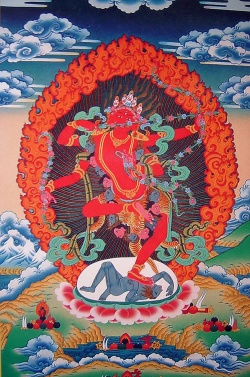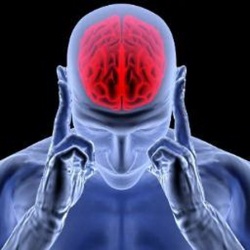Toward dualism: The Nyaya-Vaisesika way
This essay is expository and consists of three parts. The first part briefly states the basic Nyaya-Vaisesika thesis about the self. The second part studies in detail some well-known Nyaya-Vaisesika arguments in support of their theory of self and highlights some points of interpretation not heretofore clearly explained. The third part is devoted to the NyayaVaisesika critique of the Buddhist theory of self.
I
According to Gotama,(n1) the founder of the Nyaya school, desire (iccha), aversion (dvesa), volition (prayatna), pleasure (sukha), pain (duhkha), and cognition ( jnana) are the linga of the self (atman). Each one of these is an identifying mark (laksana) of the self and thus each one is a probans (hetu) for inferring the existence of the self. When it is said that desire and so forth are identifying marks of the self, what is meant is that each one of these marks is a characteristic feature of all selves and of nothing else. An identifying mark (laksana), like the definiens in Western philosophy, is required to be coextensive (samaniyata) with the subject and should be neither too wide nor too narrow. With the help of any one of such identifying marks, the self may be distinguished from everything else that is not a self; in this way the referent (sakya) of the word "self" or "I" becomes fixed.
Desire and so forth are specific qualities (visesa guna) of the self; they do not belong to any other kind of substance (dravya). The self also has some other common qualities (samanya guna), such as number (samkhya), separateness (prthaktva), and so forth, which it shares with all other substances. These common qualities are not acceptable as identifying marks of the self, because they are not limited to selves. Although each one of the six specific qualities is acceptable as an identifying mark of the self, the complex property produced by the conjunction of all these six qualities, which, too, is coextensive with the self, is not acceptable as an identifying mark of the self. This is because an identifying mark must be not only coextensive with its bearer but also simple (laghu). The requirement of simplicity holds that, other things being equal, something with fewer constituents is to be preferred to something with more constituents (sarira-krta-laghava). Thus the complex property resulting from the conjunction of the six specific qualities, which has more components than any one by itself, does not qualify as an identifying mark. It may also be noted that, in addition to the six already mentioned, the self also possesses three other unobservable (atindriya) specific qualities, namely, merit (dharma), demerit (adharma), and impression (bhavana). Each of these is also coextensive with the self.(n2) But none of them counts as an identifying mark of the self: for (in yet another ramification of the requirement of simplicity), other things being equal, what is observed is to be preferred to what is unobserved.
II
In what sense, then, are desires said to be the probantia (hetu) for the inference of the self. One well-known proof briefly stated by Vatsyayana.(n3) is as follows: "Desire, etc., are qualities; but qualities are supported by substance; that which is the support of these is the self."(n4) Uddyotakaras(n5) has observed that before one can conclude that the self is the support of desire and so forth, one must eliminate the other eight substances recognized by the Nyaya-Vaisesika school, namely, earth (prthivi), water ( jala), fire (tejas), air (vayu), akasa (the imperceptible substratum of sound), space (dik), time (kala), and inner sense (manes). He suggested that the fact that desire and so forth are directly known by the self (atmasamvedya) and the fact that these are not perceptible by the external sense organs provides the ground for the elimination of other substances. Thus, the qualities of the first five substances, namely, earth, water, fire, air, and akasa, are perceived not only by a particular person but also by other persons; further, these qualities of earth and so forth are perceived by the external sense organs. Since one's own desire and so forth can be directly known only by oneself and not by anyone else and since these are not objects of external perception, these cannot be the qualities of earth and so forth. Further, desire and so forth cannot be attributed to the remaining three substances, namely, space, time, and the inner sense, for the qualities of these substances, like these substances themselves, are imperceptible. Since none of the other recognized substances can be accepted as the substratum of desire and so forth, an additional substance must be inferred as their substratum.
The argument above has two distinct parts. The first part (by confining our attention only to desire) may be reformulated in the Barbara form as follows:
All qualities belong to a substance.
All desires are qualities.
Therefore, all desires belong to a substance.
The second part of the proof may be reformulated as a disjunctive syllogism as follows:
Desire belongs to earth or desire belongs to water or desire
belongs to fire or desire belongs to air or desire belongs to
akasa or desire belongs to space or desire belongs to time or
desire belongs to inner sense or desire belongs to an
additional ninth substance called the self.
Desire does not belong to earth and desire does not belong to
water and desire does not belong to fire and desire does not
belong to air and desire does not belong to akasa and desire
does not belong to space and desire does not belong to time and
desire does not belong to inner sense.
Therefore, desire belongs to an additional ninth substance
called the self.
The whole argument may be put in the symbolic notation as follows (by presupposing that the predicates are non-empty):
Dx = x is a desire Qx = x is a quality Sx = x belongs to a substance Ex = x belongs to earth Wx = x belongs to water Fx = x belongs to fire Ax = x belongs to air Kx = x belongs to akasa Ix = x belongs to space Tx = x belongs to time Mx = x belongs to inner sense Nx = x belongs to an additional ninth substance called the self
(x)(Dx contains Qx)
(x)(Qx contains Sx)
Therefore, (x)(Dx contains Sx)
(x)(Dx contains Ex) v (x)(Dx contains Wx) v (x)(Dx contains Fx) v (x)(Dx contains Ax) v (x) (Dx contains Kx) v (x)(Dx contains IX) v (x)(Dx contains Tx) v (x)(Dx contains Mx) v (x)(Dx contains Nx) (x)(Dx contains - Ex).(x)(Dx contains - Wx).(x)(Dx contains
-Fx).(x)(Dx contains -Ax).
(x)(Dx contains - Kx).(x)(Dx contains - Ix).(x)(Dx contains
-Tx).(x)(Dx contains - Mx).
Therefore, (x)(Dx contains Nx)
Vacaspati Misra (ninth century A.D.)(n6) offered another interpretation of the argument from desire for inferring the existence of the self as a spiritual, noncorporeal substance. He suggests that desire and so forth could be taken as the subject of inference (paksa: similar to the minor term), 'being a quality of a person belonging to the self' as the probandum (sadhya: similar to the major term), and 'being qualities which do not belong to the other eight substances' as the probans (hetu: similar to the middle term). Now the inference may be recast as follows (to be called the argument'A'):
Whatever is a quality of a person that does not belong to the
self is not a quality which does not belong to the other eight
substances, for example, color and so forth.
Desire is a quality which does not belong to the other eight
substances.
Therefore, desire belongs to the self.
Vacaspati Misra points out that in the proof above, the first general premise should not be replaced by its contrapositive, namely, that whatever is a quality which does not belong to the other eight substances is a quality of a person that belongs to the self. If the truth of this general proposition is questioned, no particular positive examples (anvayi can be adduced in its support. However, there is no dearth of particular negative examples (vyatireki-drstanta) like color, smell, and so forth, which are qualities of a person that do not belong to the self and are also qualities which belong to some of the other eight substances. Such examples can provide adequate evidence for the general premise used in the proof if the truth of that premise is questioned.
The point can be clarified further by looking at another similar argument that the living body is not without a self because it breathes. In accordance with the suggestions of Uddyotakara and Vacaspati Misra, the inference may be formulated as follows:
Whatever is without the self does not breathe.
The living body breathes.
Therefore, the living body is not without the self.
Here, too, the first premise should not be replaced by its contrapositive, namely, that whatever breathes is not without the self. Once again, no particular positive examples can be provided in support of this general proposition if its truth is challenged; from the very nature of the case living bodies are the only things which both breathe and are not without the self (in the Nyaya view animals, too, have selves; see later in this essay). But there are innumerable particular negative examples like a stone, a box, and so forth, which are without the self and also do not breathe. With the help of them the truth of the general premise actually used can be supported if needed.
It should be clear that Uddyotakara and Vacaspati Misra have taken care to give some bite to these proofs against their materialist opponents. The materialist will reject the general proposition that whatever breathes is not without the self. The dualist cannot use examples of living bodies to support this general proposition, for living bodies are the subject of inference. The methodological principle (usually accepted by Indian philosophers) is that the particular examples, whether positive or negative, to be brought in support of the general premise must exclude the subject. Since the bone of contention is whether living bodies are without the self or not, it would be circular to use living bodies themselves as evidence for the premise. The dualist also cannot hope to find any undisputed examples different from living bodies because, according to his own position, living bodies are the only things which are not without a self.
To resolve this difficulty, Uddyotakara and others have used 'whatever is without the self does not breathe' as the general premise. Any inanimate object can be cited as evidence in support of this premise; for the materialist, too, holds that things like stones are without the self and do not breathe. Thus there are particular examples which can lend support to the general premise, and these examples are acceptable to both the dualist and the materialist. But there are no undisputed counterexamples. The only things which breathe are living bodies. In the opinion of the materialist living bodies are devoid of any self in the sense of a spiritual, noncorporeal substance. But the materialist cannot cite living bodies as the counterexamples, for this is precisely where the bone of contention lies.
The living bodies are the subject of inference. It is generally agreed (in the Indian logical tradition) that the counterexamples to be brought in refutation of a premise must exclude the subject of inference. Since there are corroborative examples accepted by both the dualist and the materialist and there are no undisputed counterexamples, the general proposition 'whatever is without the self does not breathe' may be accepted as a reliable premise. The other premise, namely, 'the living body breathes', is accepted as true by both the dualist and the materialist. The argument is formally valid. Since both the premises are reliable and the argument is formally valid, the conclusion, namely, 'the living body is not without the self', may be claimed to have been reasonably vindicated. The ball is now in the court of the materialist, who should either find some convincing way of countering the force of the argument or yield to the dualist.
From the point of view of merely formal validity it makes no difference whether 'whatever breathes is not without the self' or 'whatever is without the self does not breathe' is used as a premise; the argument would be formally valid in either case. But for the reasons explained above only the use of the latter is prescribed as a premise, and thereby the dualist is able to secure an advantage over the materialist, which advantage would have been lost if the former were used as a premise instead.
Let us now take another look at the argument 'A'. It has already been explained why in this argument the first premise should not be replaced by its contrapositive. But the really sensitive part in this argument lies in the second premise, which makes two substantial claims, namely, (1) that desire and so forth are qualities and (2) that these cannot belong to the other eight substances.
That desire and so forth are qualities is shown by such experiences as I am happy', 'I know', 'I wish', and so forth, in which desire and so forth appear to be attributes of the I or the self. (Further light will be thrown on this in connection with the discussion of the Buddhist no-ownership theory of self.) The second claim clearly includes the thesis that desire, cognition, and so forth cannot be regarded as qualities of the body. Since this thesis is bound to be challenged by the materialist, the Nyaya-Vaisesika philosophers have argued at length to defend it. The main reasons for rejecting the view that desire and so forth are qualities of the body are in what follows.
(1) If desire and so forth were qualities of the body, like other qualities of the body, these, too, should have been public objects and open to the observation by one's own self as well as other selves (atmaparatmapratyaksa). But on the contrary these are private and open to observation only by one's own self (atmasamvedya). This goes to show the difference of cognition and so forth from the qualities of the body (sariragunavaidharmya). The latter are either imperceptible (atindriya) or perceptible by an external sense organ (bahyakaranapratyaksa) such as the eye, the ear, and so forth. But cognition and so forth are neither imperceptible nor perceptible by an external sense organ, but introspectible only by the inner sense (manovisayatvat) (Nyayadarsanam, pp. 893-895). Thus the materialist thesis has to be rejected to account for the privacy of our inner experiences.
(2) Consciousness (chetana) cannot be a quality of the body (na sariraguna) because it permeates the whole body (sariravyapitvat). The point is that consciousness is found in every part of the body (with the exception of the hair, nails, and so forth, which, according to these philosophers, are not parts (avayava) of the body in the strict sense).
If consciousness were a quality of the body, since the parts of the body are numerous, there should have been numerous cognizers and selves in the same body (praptam chetanabahutvam). The materialist could reply that the body as a substantial whole (avayavin) is different from its parts and is numerically one. Consciousness could be regarded as a quality of only the body as a substantial whole and not of the numerous parts; thus the difficulty of there being many selves in the same body could be avoided. But this reply would be futile, for there is no satisfactory way to explain why, from the materialist point of view, consciousness should be a quality of only the body as a substantial whole and not of the parts as well. It would not help on the part or the materialist to suppose that consciousness is a quality of only one particular part of the body. For then it cannot be explained satisfactorily why consciousness is found in every part of the body. The materialist cannot escape by boldly supposing that there are many selves in the same body. Then the experiences of one part would be accessible only to that part ( pratyayavyavasthaprasanga) just as the experiences of one person are accessible only to that person (Nyayadarsanam, p. 892).
(3) Consciousness is not a quality of the body because it is noncotemporal with the body (ayavaddravyabhavin). The body may continue to exist for a while after death without any noticeable material loss although no consciousness can be possibly found in it at that time. Thus it is clear that consciousness does not belong to the body as long as the body exists. This strongly suggests that the presence of consciousness in the body is not due to the body itself but its association with another substance. It is true that the quality of a substance need not be cotemporaneous with it. But in every case where the quality of a substance changes, one can find an opposite (pratidvandin) quality in it.
In the dead body can be found no such opposite quality which can explain the loss of consciousness. It is also true that certain processes which are essential for conservation of life, such as exhalation and inhalation, constant circulation of blood, and so forth, are always missing in a dead body. But to explain the loss of consciousness in a dead body as being due to the stoppage of such vital processes would be grossly circular: from the Nyaya-Vaisesika point of view the very presence of such vital processes in a living body serves as a pointer to the existence of an immaterial substance which possesses consciousness as a quality.
In other words, the constant and perfectly regular upward and downward motions taking place in a living body require, from the Nyaya-Vaisesika standpoint, for its explanation the volition (prayatna) of a conscious superintendent (adhisthata).(n7) Similarly, such typical phenomena as a living organism growing to its maturity (vrddhi) or recovering from bodily injury (ksatabhagnasamroha,na) cannot be accounted for without the volition of a conscious agent.(n8) Arguing from the analogy of a house owner making additions or repairs to his household, the Nyaya-Vaisesika philosophers maintain that the conscious self inhabiting a living body supervises the process of organic growth and repair of wounds. They are not deterred by the fact that if the presence of life is to serve as a sign for inferring the self, not only the bodies of humans but also the bodies of all animals as well as plants would have to be regarded as being inhabited by conscious selves. They hold without any ambiguity that there are selves for humans as well as for other animals and also plants and maintain unhesitatingly that even the plants and vegetables have consciousness hidden inside them (antahsamjna) and are capable of experiencing pain and pleasure (sukhaduhkhasamanvitah),
(4) Consciousness cannot be a quality of the body because the body is a material product. This argument is based on the premise that whatever is a material product is not conscious (yet bhutakaryam na tat chetanam).(n9) The premise is well supported by innumerable positive examples such as pots, stones, and so forth, which are admittedly material products as well as unconscious. There are also no undisputed counterexamples. Although the materialist claims that the living body is conscious, the dualist rejects that claim. Since a legitimate counterexample must be acceptable to both the parties in a dispute, it would be futile on the part of the materialist to cite living bodies as counterexamples. The argument may be restated as follows:
Whatever is a material product is unconscious.
All living bodies are material products.
Therefore, all living bodies are unconscious.
The same argument may be stated in the symbolic notation as follows
(M = material product, U = unconscious, L = living body):
(x) (Mx contains Ux)
(x)(Lx contains Mx)
Therefore, (x)(Lx contains Ux)
(5) Another similar argument is that consciousness cannot be a quality of the body because it is colored. The argument is based on the premise that whatever is colored is not conscious (yet rupavat na tat chetanam). Once again, the premise is supported by numerous positive examples like pots, houses, and so forth, which are colored and unconscious. There are no undisputed counterexamples as well. It would not be permissible to produce living bodies as counterexamples, for the dualist rejects the claim that living bodies are conscious. The argument may be reformulated as follows:
Whatever is colored is devoid of consciousness.
All living bodies are colored.
Therefore, living bodies are devoid of consciousness.
Other similar arguments to show that consciousness is not an attribute of the body may be derived from the fact that the body is changeable (parinamitvat) and from the fact that the body has a definite structure (sannivesavisistatvat).(n10) These two arguments rely, respectively, on the .premises that (1) all that is changeable is devoid of consciousness and that (2) all things having a definite structure are without consciousness. For these premises, too, there are numerous positive examples in their favor, but there are no undisputed counterexamples.
(6) If consciousness were a quality of the body, it becomes difficult to explain how a person is able to remember in his old age his childhood experiences (sarirasya chaitanye balye vilokitasya sthavire smarananupapatteh). If consciousness belonged to the body and the self and the body were the same, the old body would have to be the agent of remembering and the infant body would have to be the agent of having the original experience. But the old body and the infant body are different, and it is clear that what is experienced by one cannot be remembered by another. Thus the old body, being different from the infant body, cannot remember what was experienced by the latter.(n11)
The materialist could claim by adopting the Aristotelian view that in spite of the phenomenal difference in shape, size, and so forth, the old body, insofar as it is a substance, is the same as the infant body. From the Aristotelian standpoint, what makes a substance the same as an earlier substance is that its matter is the same, or derived from the matter of the former substance by gradual replacement, without losing the essential properties which represent its form. For living things, moreover, even total replacement of matter-provided it is gradual, and provided the structural change, too, is gradual-will not destroy identity. Since thus the old body may be said to be the same as the infant body in spite of the total replacement of matter, the difficulty of accounting for childhood memory may be resolved.
But this solution, it must be pointed out, is not acceptable from the Nyaya-Vaisesika point of view. According to the latter, even the replacement of a single part (avayava) would destroy a substantial whole (avayavin) and bring about another substance which, though utterly similar, is absolutely different from the former substance. This position has been adopted by the Nyaya-Vaisesika philosophy, not as an ad hoc assumption suitable for the present case, but as a solution to the wider issue of substantial change and sameness. It would not be profitable to enter into a discussion of the merits/demerits of the Nyaya-Vaisesika and the Aristotelian views of the sameness of a substance here. Suffice it to note that, given the Nyaya-Vaisesika view, the problem of accounting for childhood memory remains a difficult issue for the materialist.
Even if it is conceded that the old body is different from the infant body, the materialist could say by way of a rejoinder that the former is related to the latter by an unbroken causal chain and that the impression (samskara) of the childhood experience passed on through the chain could be revived on the appropriate occasion.(n12) In response it may be noted that the materialist in that case should find an explanation of why the experience,s of the mother are not passed on to the child. It will not do on the part of the materialist to suppose that the experiences of the mother belong to a particular part of the mother's body which the child does not have and hence that the experiences of the mother are not passed on to the child. The point is that the mother's body is causally related to the child's body.
If the experiences belonging to one body can be passed on to other bodies by virtue of a causal relationship, the same should happen with the mother and child as well There is no difference between the two cases. Further, the materialist would have to suppose also that each time a new body is added to the causal chain, the impression residing in the previous body is destroyed and a new impression produced. Thus the materialist would have to be committed to the origin and destruction of an indefinitely large number of impressions. From the Nyaya-Vaisesika point of view, however, the self is different from the body and remains the same in spite of the bodily changes. There is, then, no need to suppose that the
impression is replaced by a new impression each time a new body is added to the causal chain. In this respect the dualist view appears to be more economical, for it can account for childhood memory by postulating far fewer impressions than required in the materialist view.
III
Just as the Nyaya-Vaisesika philosophers have sought to refute the materialist view, so also they have argued at length against the Buddhist view (similar to the Humean view) that the self is nothing more than a bundle of particular perceptions, feelings, and so forth. Hume wrote: "When I enter most intimately into what I call myself, I always stumble on some particular perception or other.... I never catch myself without a perception" (Treatise, Bk. 1, pt. 4, no. 6). Significantly, some NyayaVaisesika philosophers agree with Hume that we can never catch ourselves without a perception, and so forth. Visvanatha writes clearly: "... the self is perceived as related to cognition, pleasure, etc., and not otherwise-through such awarenesses as 'I know', 'I do', etc."(n13) Thus Visvanatha rules out that the self can be perceived without some particular perception, and so forth.
Still the disagreement with Hume remains fundamental. Hume claims that he fails to find the self or the common subject. But according to these Nyaya-Vaisesika philosophers (as also the Mimamsa philosophers), the self is perceived through l-consciousness (aham-pratyaya-gamyatvat atma pratyaksa) (Nyayamanjari, pt. 2, p. 4). Thus "the awareness that I am happy directly reveals the self also" (aham sukhiti tu jnaptiratmanah api prakasika (ibid., p. 7). Moreover, the awareness that I know cannot be maligned even by a small grain of fault: of this the self is the chief content (na khalu aham janami iti pratyayah kenacit alpiyasa do,sare,nuna dhusarikartum paryate tadasya atma eve mukhyo vi,sayah) (ibid., p. 4). In other words, in such particular experiences as 'I am happy', 'I know', 'I wish', and so forth the self is revealed as the common subject. This direct testimony goes against the Buddhist (and the Humean) view.
Other Nyaya-Vaisesika philosophers have denied that the self is perceived and have offered reasonings (fully endorsed also by those holding that the self is perceived) to prove the self's permanence. Desire and so forth play the crucial role in these reasonings, too. "When a person has earlier experienced pleasure from some kind of thing, upon coming across later another thing of the same kind and remembering its pleasantness he wishes to acquire it. A wish originating in this way leads to the inference of a subject (asraya) capable of synthesizing past and present experiences (purvaparanusandhanasamartha)" (ibid., p. 8). The claim, then, is that desire can be accounted for only by accepting that the owner of the past and the present experiences is the same (samanakartrka).
In the same way aversion (dvesa) also serves as a sign for personal identity and continuity. "When a person has experienced pain from some kind of thing, upon coming across again that sort of thing and remembering its painfulness he has aversion for it. This cannot be explained without the same synthesizer (pratisandhata)" (ibid., p. 9). Similarly, pleasure, pain, volition, and cognition would prove personal identity so long as these are based on memory, for "a thing experienced by one cannot be remembered by another (na anyadrstah arthah smartum anyena sakyate)." In particular, each of the four sources of knowledge (recognized by the Nyaya), namely, perception, inference, upamana, and verbal knowledge, lends support to the identity and continuity of the self. Thus "recognitive perception (pratyabhijna) could not take place if the knower were different. Just as it proves the sameness of the known object, so also it proves the sameness of the knowing person" (ibid., p. 15).
In other words, when a person recognizes something he is seeing now, say a statue, to be the same as that which he has seen before, the truth of such recognitive perception can be accounted for only if the statue seen now is the same as that seen before and the person recognizing it is the same as he who saw it before. Again, "Knowledge of universal connection (avinabhavagrahanam), knowledge of the probans (lingajnanam), remembrance of the relation (anvayasmaranam) between that and the probandum, knowledge of the probandum (lingipramiti)- since inference involves these, it could not take place if the knower were different" (ibid., p. 15). To explain: when one infers that the probandum (lingin) belongs to the subject ( paksa) on the basis of the knowledge that the probans (linga) belongs to the subject and the knowledge that the probans is universally concomitant with the probandum after having ascertained earlier through observation that the probans and the probandum are so related, the accounting for such a process requires that there be an abiding knower going through all the successive steps.
Further, "After. one [who has never seen a buffalo] has received the instruction that a buffalo is similar to a cow from a forester and seen an animal in the forest similar to the cow, one learns [for the first time] the name of that as the result-since upamana is such, it would be impossible if the knower were different" (ibid., p. 15). Finally, "Hearing the letters in succession, understanding the word-meanings (padarthagraha) by way of remembering the semantic connections (samayasmrtya), reviewing the word-meanings (tadalocanam) with the help of their impressions at the time of apprehending the last letter (tatsamskarajam antyavarnakalanakale), understanding the meaning of the sentence as a whole (vakyarthasampindanam) by means of the syntactic and other relationships (akarnk,sadinibandhananvayakrtam)-all these would be extremely difficult to explain without the selfsame knower" (ibid., p. 15). in other words, linguistic communication presupposes an abiding knower, for understanding the meaning of a word requires the synthesis of the letters heard in succession, and understanding the meaning of a sentence requires the synthesis of the word-meanings grasped in succession.
In the Buddhist version of the no-ownership theory, there is not only no permanent self, but, moreover, each internal state (in conformity with the general doctrine of momentariness applying to all reals) is strictly momentary. Each internal state endures for exactly one moment and ceases to exist in the following moment. Each preceding state, however, serves as the cause of the succeeding state, and thus the entire stream (santana) of momentary states is linked by an unbroken causal chain. Faced with the difficulty of accounting for memory and such acts as recognitive perception, synthesis of word meanings, and so forth, which presuppose memory, the Buddhist has responded as follows. Since the stream is linked by an unbroken causal chain, the momentary state to which the original experience belonged is able to produce an impression of the experience in the succeeding state, which in its turn is able to produce another impression in the next state, and so on.
In this way the impression of any previous experience may be passed on to any later member of the same stream. Hence any later member of the stream possessing the impression of the original experience may be able to remember the same in spite of being different from the earlier state having the experience. The impressions required in such an explanation are certainly far more numerous than those required in the theory of an abiding self. In this respect the Buddhist theory is bound to be less economical. But the Buddhist is not perturbed by such proliferation in the number of entities, for this is an inevitable consequence of the doctrine of momentariness to which the Buddhist is already committed on independent grounds.
One problem in this view, however, is that since the Buddhist cannot fall back on a permanent entity like the brain or the body as the materialist can, he must suppose that every momentary internal state will have a successor so that any discontinuity in the causal chain is avoided. The claim that every momentary internal state has a successor (until at least attaining nirvana, and even after attaining nirvana, according to some Buddhists) has, from the Nyaya-Vaisesika point of view, all the appearance of a forced solution. For one thing, the Buddhist must maintain that even when a person is sound asleep and not dreaming, the momentary internal states continue to be generated ceaselessly. The Nyaya-Vaisesika philosophers find this to be nothing more than an ad hoc assumption, for there is no evidence to prove that any actual cognitive or noncognitive internal state is produced during dreamless sleep. The difference between the Nyaya view and the Buddhist view on this point is clear. For the former, all that needs to be maintained is that the impressions of past experiences continue to exist as dispositions. But the latter must hold that actual, and not merely dispositional, internal states are generated continuously even during dreamless sleep, and that each such state is capable of performing the role of being the cause of the succeeding state. In this respect the ontological burden of the Nyaya view turns out to be lighter.
It may further be asked what kind of mental states could be plausibly said to be uninterruptedly generated (and destroyed) during dreamless sleep. Such states could not be those of pleasure, pain, awareness of any object, and so forth, for then the question would be: if these were actually produced during dreamless sleep (susupti), why does not anyone ever come to know of their occurrence? One suggestion advanced by some Buddhists is that these are purely subjective states of consciousness (alayavijnana) which are formless (nirakara) as well as non-intentional (nirvisayaka). Now the admission of non-intentional states of consciousness may be welcome from the Buddhist point of view, particularly from that of the Yogacara school. But to the Nyaya-Vaisesika philosophers this is objectionable, for according to them all cognitive states are intentional (savisayaka). Further, the supposition that self-consciousness persists (albeit as a series of momentary states) in a dreamless sleep virtually amounts to a departure from the original spirit of the no-ownership theory and brings it dangerously close to the theory of a permanent self.
Finally, a crushing objection has been succinctly stated in the following passage.
If momentary, what has, been experienced long ago cannot be
remembered, for the cognizers are different. If it is said that
what was experienced by an earlier momentary state may be
remembered by a later state because of their being related as
cause and effect, this is inappropriate. If there were no self,
the relation of cause and effect could not be ascertained. The
cognitive state which would be the effect is yet to come into
being when the cognitive state which is the cause is there, and
by the time the former comes into being, the latter ceases to
be. Since there is no knower other than these two which remains
the same, how could it be known that these two successive
entities are related as cause and effect? It may be suggested
that the earlier state which is self-revealing also becomes
aware of its nature as the cause which is non-different from
itself; similarly the self-cognizing later state also becomes
aware of the fact of its being the effect which is
non-different from itself.... But this is an undue fabrication.
Each of the two earlier and the later cognitions is confined to
itself; how then could the awareness that I am the effect of
this or the awareness that I am the cause of that take place?
The fact is that each is ignorant about the other.(n14)
In brief, cognition of succession has to be distinguished from succession of cognition (which may remind one of a well-known argument of Kant); the former cannot be accounted for without an abiding knower.
To conclude: we have explained how the Nyaya-Vaisesika philosophers have argued for the theory of self as an abiding, noncorporeal substance and defended their view against both the Carvaka materialists and the Buddhist no-ownership theorists. The discussion is by no means comprehensive. A fuller account would have to include copious references to such works as Udayana's Atmatattavaviveka (tenth century A.D.).(n15) It is hoped nevertheless that the discussion would provide food for the thought of contemporary philosophers of mind although not many of them support the theory of self as a permanent, immaterial substance.
NOTES
(n1) - Gotama is the reputed author of the Nyayasutra (sixth/fifth century B.C.). Since it is written in an aphoristic style, it has to be read with the commentary of Vatsyayana called the Bhasya (second century B.C.). For these dates see U. Misra, History of Indian Philosophy, vol. 2 (Allahabad: Tirabhukti Publications, 1966), pp. 25-36. Both of these works have been translated into English by Gr. Jha (Poona: Oriental Book Agency, 1939).
(n2) - This entire discussion applies only to individual, non liberated selves.
(n3) - Vatsyayana is the famous commentator on the Nyayasutra. See note 1.
(n4) - Nyayadarsanam of Gotama with Vatsyayana's Bhasya, Uddyotakara's Varttika]], Vacaspati Misra's Tatparvatika and Visvanaatha's Vrtti, ed. Taranatha Nyaya-Tarkatirtha and Amarendramohan Tarkatirtha, 2d ed. (New Delhi: Munshiram Manoharlal, 1985) (abbreviated as Nyayadarsanam), pp. 156-157.
(n5) - Ibid., p. 157. Uddyotakara's Nyayavarttika (sixth century A.D.) has been translated into English by Gr. Jha, Indian Thought (Allahabad: E. J. Lazarus & Co., 1910-1920).
(n6) - Ibid., p. 157. A portion of of Vacaspati Misra's Tatparyatika has been translated into English by T. Stcherbatsky, Buddhist Logic, vol. 2 (New York: Dover, 1962).
(n7) - Vaisesikasutropaskara of Sankara Misra with the Prakasika Hindi commentary by Dhundiraja Sastri, ed. Narayana Misra (Varanasi: Chowkhamba Sanskrit Series Office, 1969), pp. 239-240.
